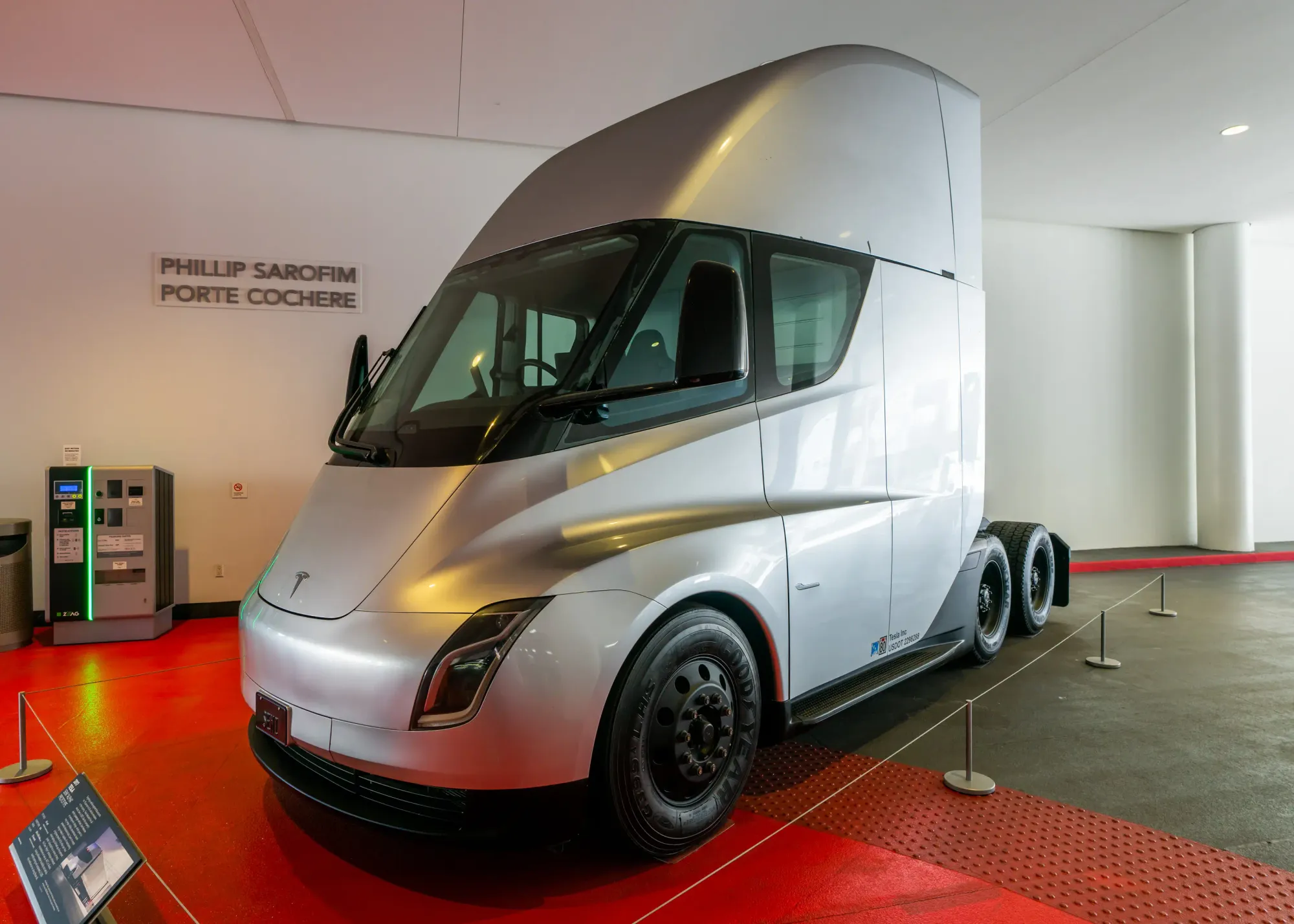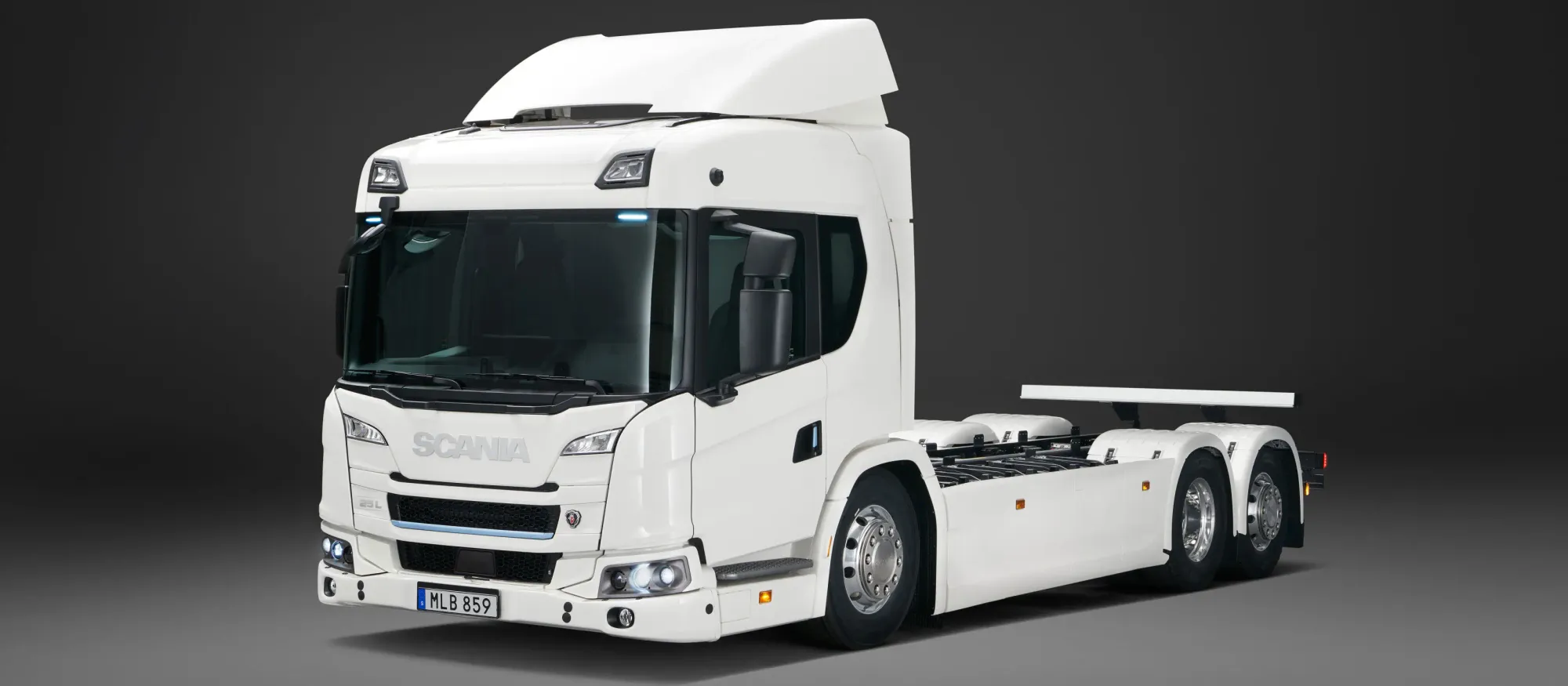The Tesla Semi and Scania Electric Truck represent significant strides in the evolution of electric commercial vehicles, capturing the attention of enthusiasts and potential buyers alike. This comparison delves into their features, revealing how they cater to diverse needs and preferences within the electric vehicle market.
Pricing and Trim Levels: Tesla Semi vs Scania Electric Truck
Pricing and trim levels are crucial for potential EV buyers, offering insight into value and features.
-
💰 Base Model Pricing: The Tesla Semi starts at approximately $150,000, boasting a 300-mile range and essential features. In contrast, the Scania Electric Truck's pricing begins around $98,000, offering a 155-mile range and customizable configurations.
-
🚀 Performance Trims: Tesla's advanced trim offers a 500-mile range at about $180,000, while Scania provides various performance packages that enhance efficiency and payload capacities.
Design and Exterior Features: Tesla Semi vs Scania Electric Truck
Design and exterior features impact an EV's aesthetic appeal and functional efficiency.
-
🎨 Aerodynamic Design: The Tesla Semi's sleek, futuristic design enhances aerodynamics, reducing drag. Scania prioritizes functionality with its streamlined, classic truck silhouette.
-
💡 Lighting and Aesthetics: Tesla's LED lighting is integrated for a modern look, whereas Scania opts for robust LED clusters to enhance visibility and durability.
-
🚪 Unique Features: The Tesla Semi features a central driving position, while Scania includes customizable roof heights for varied applications.
-
📏 Exterior Dimensions: The Tesla Semi measures about 80 feet in length, focusing on maximizing cargo space. Scania's modular dimensions allow for adaptability in different transport needs.
Interior and Cabin Space: Tesla Semi vs Scania Electric Truck
Interior comfort and space are pivotal for driver satisfaction and long-haul usability.
-
🪑 Seating and Comfort: Tesla offers a minimalist cabin with ergonomic seating for two. Scania provides a more traditional setup with extensive customization for comfort.
-
📱 Technology Integration: The Tesla Semi includes two touchscreens for enhanced vehicle management. Scania emphasizes connectivity with its digital dashboard and integrated fleet management tools.
-
🧳 Storage and Utility: Tesla's cabin focuses on a spacious, uncluttered feel, while Scania delivers practical storage solutions optimized for operational efficiency.
Performance and Acceleration: Tesla Semi vs Scania Electric Truck
Performance and acceleration are key factors for evaluating an EV's capability and efficiency.
-
⚡ Acceleration and Speed: Tesla Semi reaches 0-60 mph in 20 seconds fully loaded, impressively quick for a truck. Scania focuses on steady power delivery suitable for urban and regional routes.
-
🛞 Handling and Drive Modes: Tesla uses advanced traction control systems for smooth handling. Scania provides adaptive drive modes tailored for diverse driving conditions.
Range and Battery Options: Tesla Semi vs Scania Electric Truck
Range and battery options are critical for understanding an EV's operational limits and efficiency.
-
🔋 Battery Options: Tesla offers two main battery configurations, focusing on long-distance travel. Scania provides multiple battery pack options, allowing for tailored solutions based on route needs.
-
🌍 Real-World Range: Tesla's real-world range can reach up to 500 miles on a single charge, while Scania's is around 155 miles, emphasizing urban utility.
Technology and Safety Features: Tesla Semi vs Scania Electric Truck
Advanced technology and safety features enhance the driving experience and security.
-
🤖 Driver Assistance Features: Tesla's Autopilot offers semi-autonomous driving capabilities. Scania includes adaptive cruise control and lane-keeping assist.
-
🚘 Full Self-Driving (FSD): Tesla's FSD package is a future-ready option, unlike Scania, which focuses on current advanced driver-assistance systems.
-
🛡️ Active Safety Features: Both models feature collision avoidance and emergency braking, with Tesla incorporating more automated interventions.
-
⭐ Crash Test Ratings: While Tesla is known for strong safety frameworks, Scania adheres to rigorous commercial vehicle safety standards in Europe.
Charging Options and Infrastructure: Tesla Semi vs Scania Electric Truck
Charging infrastructure is crucial for electric vehicle feasibility and convenience.
-
⚡ Home Charging: Tesla supports efficient home charging setups with wall connectors. Scania offers solutions geared towards fleet operations.
-
🌍 Public Charging Networks: Tesla's extensive Supercharger network is a strong advantage, while Scania relies on broader European networks.
Charging Speed: Tesla Semi vs Scania Electric Truck
Charging speed directly impacts downtime and efficiency for EV owners.
-
⚡ Home Charging Speed: Tesla provides faster home charging solutions compared to Scania's standard offerings.
-
🌍 Fast Charging Speed: Tesla's Superchargers offer higher charging speeds, significantly reducing downtime. Scania's fast-charging capabilities are competitive for its segment.
-
🛠️ Third-Party Chargers: Both models offer compatibility with various third-party charging networks, though Tesla's integration is often smoother.
Customization Options: Tesla Semi vs Scania Electric Truck
Customization allows buyers to tailor their EVs to specific needs and tastes.
-
🎨 Exterior Colors: Tesla offers a limited, sleek color palette, while Scania provides extensive color options for branding.
-
🛞 Wheel Designs: Tesla's aerodynamic wheel designs focus on efficiency. Scania offers diverse wheel options tailored for different terrains.
-
🪑 Interior Trims: Tesla opts for a futuristic, minimalist interior, whereas Scania provides a range of materials and finishes for a traditional feel.
Conclusion: Tesla Semi vs Scania Electric Truck
Ultimately, each model has distinct strengths and considerations to weigh.
-
✅ Strengths of Each Model: Tesla stands out with its range, advanced tech, and network, while Scania excels in customization and practicality for commercial use.
-
❌ Considerations: Tesla's higher initial cost and proprietary systems may deter some buyers, whereas Scania's shorter range could limit its suitability for long-haul routes.




